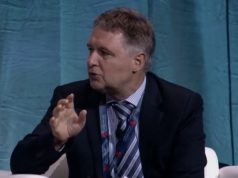
Data from the BIOSOLVE-IV trial, presented at the Transcatheter Cardiovascular Therapeutics annual meeting (TCT 2021, 4–6 November, Orlando USA and virtual), demonstrate the superiority of the Magmaris (Biotronik) sirolimus-eluting bioresorbable magnesium scaffold with regard to probable or definite scaffold thrombosis compared to a historical control group of the Absorb (Abbott) bioresorbable scaffold.
The full-cohort one-year results confirm the safety and performance of the Magmaris scaffold in a larger cohort, Biotronik said in a press release. Of particular note is the target lesion failure rate of 5% and a definite/probable scaffold thrombosis rate of 0.8% at 12 months, confirming the safety profile from the first cohort with 1,075 patients. The new data was presented by Johan Bennett, coronary interventionalist at University Hospitals Leuven, Leuven, Belgium.
“The results of the BIOSOLVE-IV study confirm that the Magmaris scaffold is safe and comparable to leading second-generation drug-eluting stents on the market. Importantly, the Magmaris scaffold also proves, for the first time, powered superiority to the Absorb scaffold for definite and probable scaffold thrombosis, an important landmark after the Absorb scaffold raised concerns with notably high rates of scaffold thrombosis compared to contemporary drug-eluting stents,” said Bennett, one of the registry’s principal investigators. “We are excited to see continuous low target lesion failure rates for this bioresorbable scaffold—now in larger and more diverse patient groups.”
BIOSOLVE-IV is an international, single arm, multicentre registry conducted in more than 80 centres in 23 countries in Europe, Asia, Africa, Australia and New Zealand. The registry includes 2,066 patients with a maximum of two single de novo lesions. BIOSOLVE-IV’s patient population encompasses N-STEMI patients, diabetic patients and more complex B2/C lesions, for whom a first cohort subgroup analysis at one-year follow-up was presented at TCT 2020. Follow-up is scheduled up to five years and the primary outcome is target lesion failure (TLF) at 12 months.
The recent positive outcomes complement previous BIOSOLVE-IV results such as the first cohort’s promising 12-month data as well as data presented at the EuroPCR 2021 meeting (18–20 May, virtual), showing no increase in scaffold thrombosis between 12-month and 24-month follow-ups.
“This full cohort data of a broad patient population including more challenging indications such as NSTEMI, demonstrate that the Magmaris RMS is a safe and effective therapy option,” commented Alexander Uhl, president of Vascular Intervention at Biotronik. “These results confirm that our unique resorbable magnesium technology does not share the same concerns as PLLA scaffolds, and does and will continue to play a significant role in vascular therapy. We believe in absorbable magnesium technology and patient care and see growing adoption within the medical community.“












